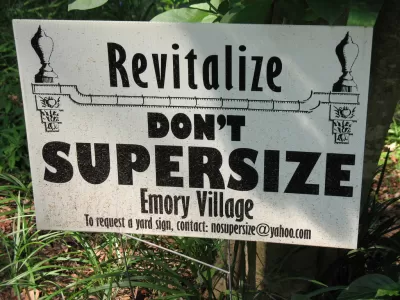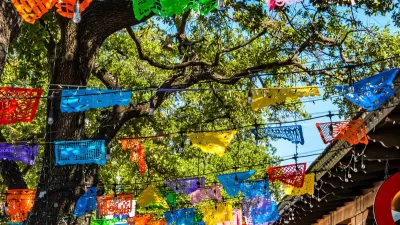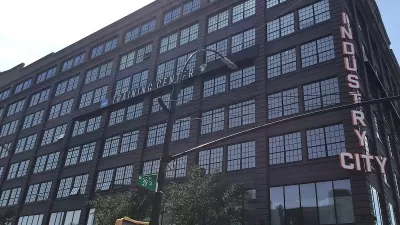Luxury condos are often identified as the culprit in urban gentrification, but could it be that teardowns of single family homes that give way to much larger single family homes is a driver of suburban gentrification?

Mary Ellen Podmolik reports on the research of Suzanne Lanyi Charles, an assistant professor of architecture at Boston's Northeastern University. Charles "single-family home redevelopment — better known as teardowns — in suburban Cook County from 2000 to 2010," for evidence that the mansionization of Chicago's suburbs was a driver of gentrification.
Podmolik describes the research as a work in progress, with a large question asking to be answered: "So are the suburbs going the way of some neighborhoods, getting big, pretty houses at the expense of more moderate abodes and pushing out residents?"
Charles is still unsure of the answer to the question, as evidenced by this quote from the article: "I'm not entirely convinced this is gentrification…If you look that the new house is three times as expensive, you'd think the household coming in would have a considerably higher income. By one definition, that's a form of gentrification. But I've heard examples in Norridge of people who grew up in Norridge and wanted to stay there."
FULL STORY: Teardowns transforming Chicago's inner suburbs

Planetizen Federal Action Tracker
A weekly monitor of how Trump’s orders and actions are impacting planners and planning in America.

Maui's Vacation Rental Debate Turns Ugly
Verbal attacks, misinformation campaigns and fistfights plague a high-stakes debate to convert thousands of vacation rentals into long-term housing.

San Francisco Suspends Traffic Calming Amidst Record Deaths
Citing “a challenging fiscal landscape,” the city will cease the program on the heels of 42 traffic deaths, including 24 pedestrians.

Amtrak Rolls Out New Orleans to Alabama “Mardi Gras” Train
The new service will operate morning and evening departures between Mobile and New Orleans.

The Subversive Car-Free Guide to Trump's Great American Road Trip
Car-free ways to access Chicagoland’s best tourist attractions.

San Antonio and Austin are Fusing Into one Massive Megaregion
The region spanning the two central Texas cities is growing fast, posing challenges for local infrastructure and water supplies.
Urban Design for Planners 1: Software Tools
This six-course series explores essential urban design concepts using open source software and equips planners with the tools they need to participate fully in the urban design process.
Planning for Universal Design
Learn the tools for implementing Universal Design in planning regulations.
Heyer Gruel & Associates PA
JM Goldson LLC
Custer County Colorado
City of Camden Redevelopment Agency
City of Astoria
Transportation Research & Education Center (TREC) at Portland State University
Jefferson Parish Government
Camden Redevelopment Agency
City of Claremont





























